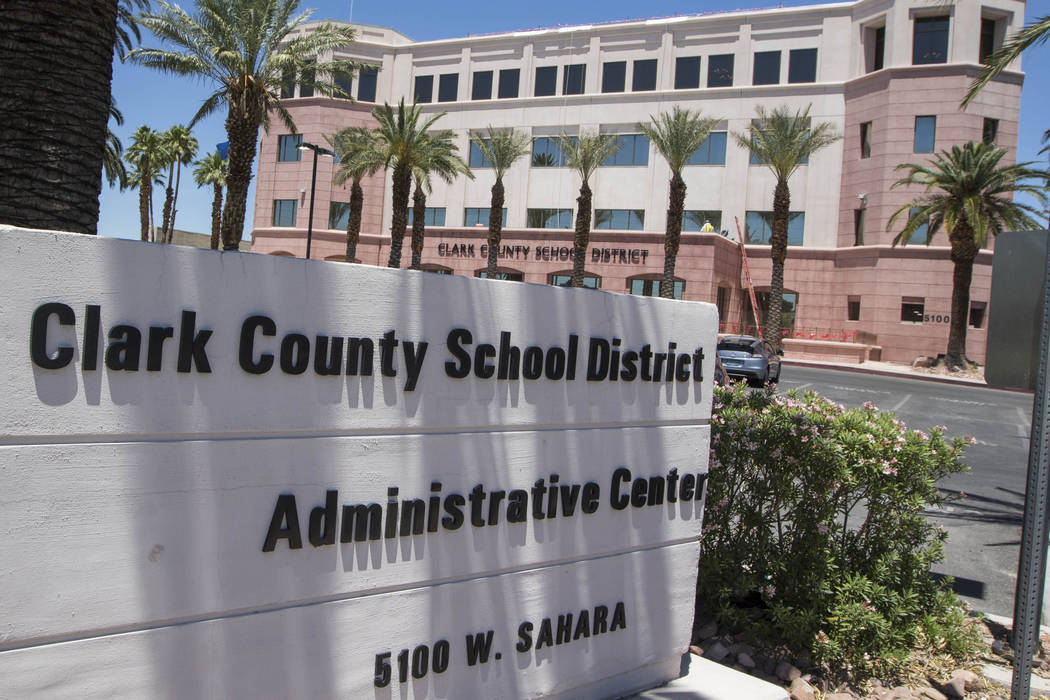Warning signs on suicide in Clark County schools spark concerns

Beyond guns, knives and fights, there’s another aspect of student safety that’s raising concerns in the Clark County School District.
The number of documented cases of students demonstrating suicidal thoughts rose 32 percent in a year, from 1,585 in 2015-16 to 2,096 in 2016-17, according to district data.
Numbers from the county coroner’s office tell a similar story. Since 2014, the number of children and teens committing suicide has increased steadily, from eight to 10 to 15. So far in 2017, that number stands at 11.
Just as worrisome: School psychologists are seeing suicidal “ideations,” or thoughts, among younger students, said Katie Dockweiler, president of the Nevada Association of School Psychologists.
“I can say that collectively we hear reports from members that ideations are happening at a much younger age, into the elementary schools, and with much more frequency,” she said.
Another aspect of the problem: The district has a shortage of psychologists who can support students in need, said Dockweiler. The recommended ratio is one school psychologist for every 500 to 700 students, she said. In Clark County, that ratio is 1-to-3,500.
“School psychologists are oftentimes the ones who help identify those students,” she said. “And we don’t have enough of us.”
Schools follow a protocol when a student expresses thoughts of suicide. Members of an intervention team that may include counselors, psychologists, nurses and social workers first assess risk.
“Our whole emphasis is trying, of course, to intervene at the least restrictive level,” said Robert Weires, director of psychological services. “We engage parents early on … and it’s based on the child’s needs.”
After the assessment, staffers may guide parents to outside resources.
There could be multiple reasons behind the reporting increase. The district may have improved its documentation of such cases, or, as Weires suggests, students and families may be more willing to seek help.
Meanwhile, suicide has figured in the debate over the gender-diverse policy the district is currently crafting, which could help address the needs of transgender students.
“School Board trustees, you have a choice,” said Tristan Torres, a former CCSD student who spoke in favor of a policy. “You can make tomorrow a better day for LGBTQ students, or you can be the reason that they write their suicide notes. It’s up to you.”
The district has been accused of not adequately responding to reports of harsh bullying that can lead to suicide. It faced a lawsuit from the father of Hailee Lamberth, a middle school student who killed herself in 2013. A similar lawsuit followed.
But in other areas, the district has been proactive. It added a “signs of suicide” program in eighth- and ninth-grade health classes. It sent a letter to parents in May about the Netflix show “13 Reasons Why,” which tells the story of a teen’s suicide.
District officials also are urging students to be on alert for warning signs.
“If you see something, say something,” said Carlos Morales, assistant superintendent for student services. “There is no shame in assisting, and there’s no shame in asking for assistance.”
The National Suicide Prevention Lifeline is available 24/7 at 800-273-8255.
Contact Amelia Pak-Harvey at apak-harvey@reviewjournal.com or 702-383-4630. Follow @AmeliaPakHarvey on Twitter. On Education appears every other Saturday.